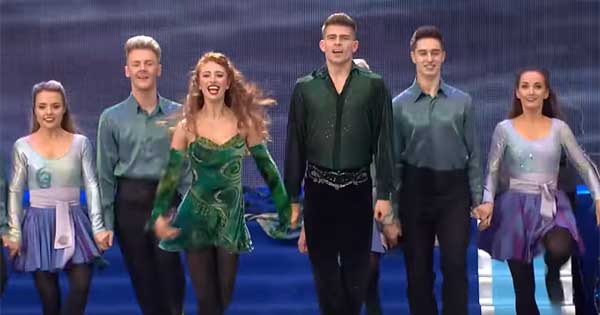One of the most common reactions of people seeing ‘Irish dancing’ for the first time is ask: why do they keep their arms so stiff by their sides?
Well, the simple answer is that they don’t, at least, not for most Irish dancing. It’s only in Step Dancing that performers are expected to maintain the stiff-arm approach. In other forms of Irish dancing like Sean Nos, Ceilí and Set Dancing, the arms are free to move as much as the dancer likes.
And even in Step Dancing, mainly under the influence of Michael Flatley’s Riverdance, the old convention has been relaxed and we now see more use of the arms.
But yes, traditional and purist Step Dancing, as still taught by Irish dance schools across the world, still requires the arms to be kept still.
Exactly why this is so, no one knows for sure… although there are lots of theories.
One possible explanation that is often quoted is that it’s down to the power of the Catholic Church, which exerted so much control over Irish life right up until the 1970s. It’s thought the clergy didn’t like the idea of young men and women being allowed to hold hands or even put their arms around each other as happened in most dance forms.
To ensure there was no chance of any sneaky canoodling going on, they insisted that dancers always kept their arms strictly by their sides.
There is no direct evidence for this but it’s plausible given the way the church cast its spell over all aspects of life in Ireland for so long.
Perhaps less plausible is the theory that it dates from the days when Ireland was constantly rebelling against British rule. The British tried to establish control by attempting to stamp out aspects of Irish culture and identity, including traditional songs and dance.
The Irish responded, so the theory goes, by keeping their arms still so the British would not be able to tell they were dancing if they say them through the windows of a country house, behind a hedge or behind the bar in a pub.
This doesn’t seem too likely though does it? You’d have to be a very short-sighted soldier not to realise that that all that bobbing up and down on the spot amounted to some form of dancing.
Other explanations put forward include the theory that the stiff arms was a kind of protest by dancers who were forced to dance for Queen Elizabeth, who was responsible for starting the plantations of Ireland. These dancers had no choice but to dance for the Queen, so the stiff arms was their way of showing their fellow countrymen that they didn’t want to do it and weren’t enjoying the experience.
A variation on this ‘not enjoying it’ theory takes us back to the Catholic Church, which wanted dance to be less joyous and secular, and more serious and spiritual instead.
The most likely explanation, however, is more straightforward than any of these other theories. According Irish dance teacher Antonio Pacelli, it’s all down to the kind of style preferred by the dance teachers of the 18th century.
He writes: “They liked etiquette and disapproved of the unruly arm movements of Sean Nos dancing. They therefore made their students dance with their arms in a fixed position, holding a stone on the hand to keep them in a fist.”
Whatever the true reason, the straight arm approach has survived to this day and has helped to give Irish step dancing its unique character and appeal.
Irish Step Dancing (Riverdance) 2009
Edwina Guckian – Sean Nós Dancing
Ceili dance
Paige Turilli World Champion Set Dance
Is this how Irish dancing really started?
Free Irish Language course put on by experts at Dublin City University
